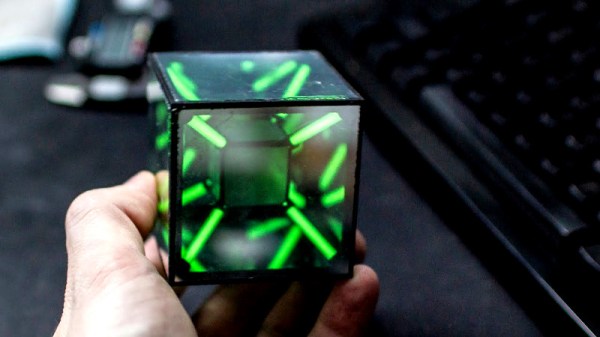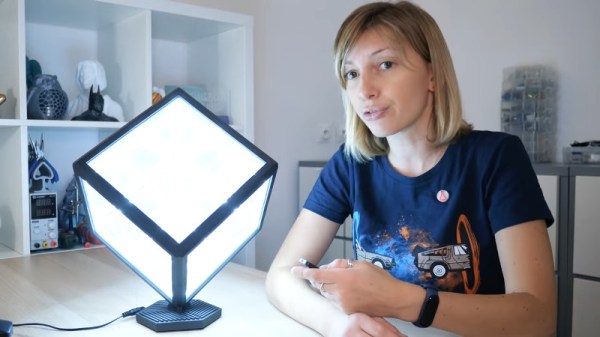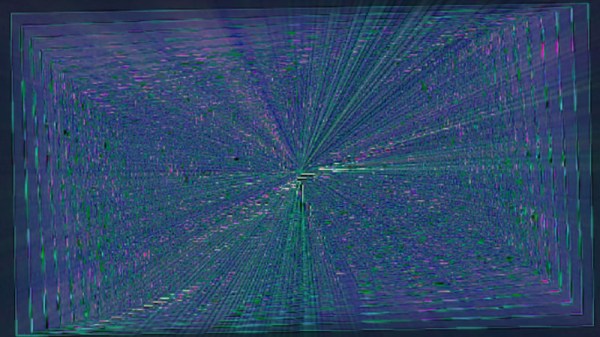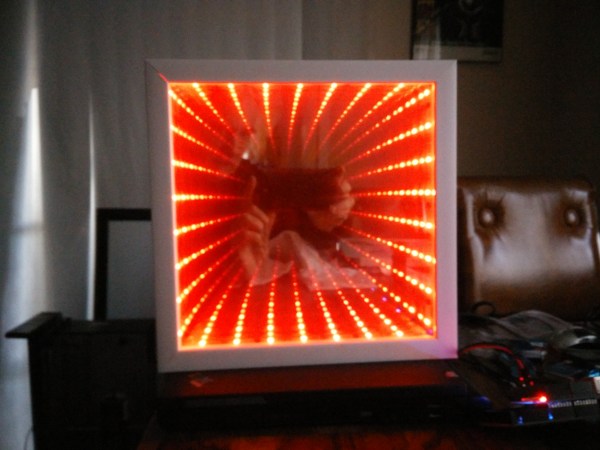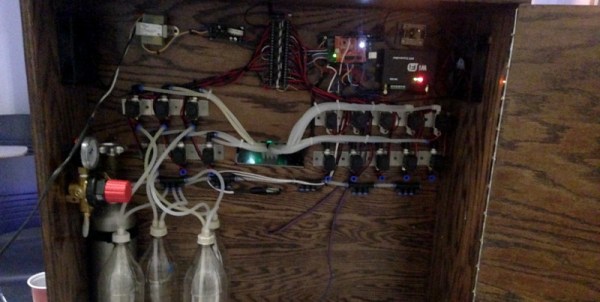Cubes and pyramids are wonderful primitive three-dimensional objects, but everyone knows that the real mystical power is in icosahedrons. Yes, the twenty-sided polyhedron does more than just ruin your saving throws in tabletop RPGs – it can also glow and look shiny in your loungeroom at home.
[janth]’s build relies on semitransparent acrylic mirrors for the infinity effect, lasercut into triangles to form the faces of the icosahedron. The frame is built out of 3D printed rails which slot on to the acrylic mirrors, and also hold the LED strips. [janth] chose high-density strips with 144 LEDs per meter for a more consistent effect, and added frosted acrylic diffusers to all the strips for a clean look with less hotspots from the individual LEDs.
An ESP32 runs the show, and the whole assembly is epoxied together for strength. The final effect is very future disco, and it’s probably against medical advice to stare at it for more than 5 minutes at a time.
The infinity effect is a popular one, and we’ve seen a beautiful cube build by [Heliox] in recent times. Of course, if you do manage to build an actual portal through time and space, and not just a lamp that looks like one, be sure to send us a tip. Video after the break.
Continue reading “Infinity Icosahedron Is Difficult To Contemplate Even Looking Right At It”


